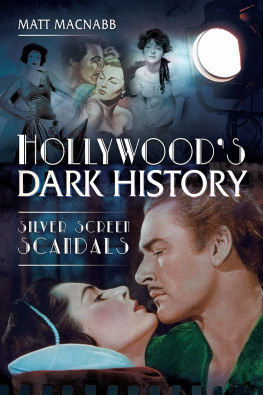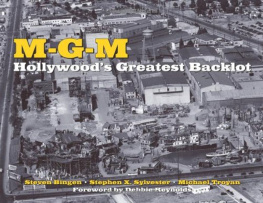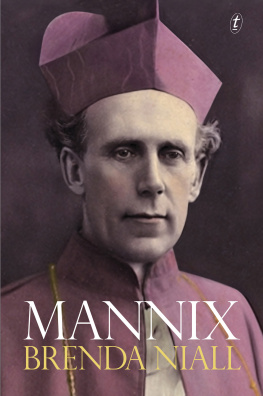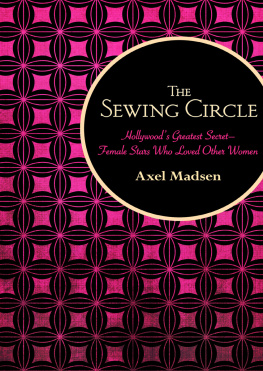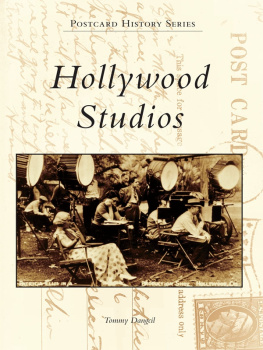
Table of Contents
The Fixers
Eddie Mannix,
Howard Strickling
and the MGM
Publicity Machine
E.J. FLEMING
McFarland & Company, Inc., Publishers
Jefferson, North Carolina, and London
ALSO BY E.J. FLEMING
AND FROM MCFARLAND
____________________
The Movieland Directory: Nearly 30,000
Addresses of Celebrity Homes, Film Locations
and Historical Sites in the Los Angeles Area,
1900Present (2004)
Hollywood Death and Scandal Sites:
Sixteen Driving Tours with Directions
and the Full Story, from Tallulah Bankhead
to River Phoenix (2000)
LIBRARY OF CONGRESS CATALOGUING-IN-PUBLICATION DATA
Fleming, E.J., 1954
The Fixers : Eddie Mannix, Howard Strickling and the MGM publicity machine / E.J. Fleming.
p. cm.
Includes bibliographical references and index.
ISBN-13: 978-0-7864-2027-8
1. Mannix, Eddie. 2. Strickling, Howard. 3. Theatrical agentsUnited StatesBiography. 4. Metro-Goldwyn-Mayer. 5. Motion picture industryPublic relationsCaliforniaLos Angeles. I. Title.
PN1998.2.F557 2005
791.43'092'273dc22 2004025792
British Library cataloguing data are available
2005 E.J. Fleming. All rights reserved
No part of this book may be reproduced or transmitted in any form or by any means, electronic or mechanical, including photocopying or recording, or by any information storage and retrieval system, without permission in writing from the publisher.
Front cover: Eddie Mannix and Howard Strickling (Bison Archives, Raleigh Studios, Hollywood, CA); background 2005 PhotoSpin
McFarland & Company, Inc., Publishers
Box 611, Jefferson, North Carolina 28640
www.mcfarlandpub.com
This is for my family and for our friends
who have heard all the stories.
Now you can interrupt me when
I repeat one and say, I have the book.
Acknowledgments
My interest in the movies and Hollywood history goes back over twenty years, and for those twenty years my family and friends have offered ears for (probably) seemingly unending stories and have given ongoing encouragement. For that I want to thank them individually and as a group. Thank you to Barb and the kids, Mom and Dad, my brother Tony for his unending assistance with all things computer, my friends Dick and Lemoyne Rhoades, Mitch Gibney (who still lends me his apartment ten years later), and people like Barb and Gerry Tax, George and Judy Tujowski, Don and Nancy Burke and Scott Davis, who listen patiently as I ramble on.
I also want to thank the staff at the Herrick Library at the Academy of Motion Picture Arts and Sciences, who treat every researcherimportant and notas if they were famous. Also, the people at the UCLA Library and the Beverly Hills and Los Angeles Public libraries are universally helpful and encouraging.
A number of people shared recollections and confirmed many of the stories in this book that had previously been just rumor, particularly the late Maurice Rapf. His remembrances of the earliest days of MGM and Hollywood were invaluable and insightful. Maurice was in a unique position to confirm many of the unconfirmed rumors about Eddie Mannix and Howard Strickling, having known them personally growing up in early Hollywood before being blacklisted during the McCarthy era. Kevin Apodaca in Los Angeles and Maurices daughter Joanna in New Hampshire were both instrumental in arranging for me to speak with her father.
Also a special thank you to Jack Larson for sharing his stories of growing up in Hollywood among the European expatriate community and his lifelong friendship with Eddie and Toni Mannix. His personal involvement in the life and tragic death of George Reeves, and knowledge of Reeves relationship with Toni Mannix, made him an invaluable source of information and confirmation. Reeves researchers and writers Jim Hambrick and Jim Nolt also offered their opinions and thoughts about that section of the book. Thanks also to the wonderful writer David Stenn for his gracious offer of reviewing the manuscript and for his direction and thoughts. His books about Jean Harlow and Clara Bow are two of the best Hollywood biographies available.
The late Col. Barney Oldfield offered numerous insights into the personalities of Howard and Gail Strickling and many of the people in the book and patiently and thoughtfully responded to my every query. Both he and Cecil Jones were instrumental in helping track down photographs, and for that I thank them both. Lita Grey Chaplin offered some interesting stories of the silent era, for which I am grateful.
Chicago
November 2004
Gossip columnist Louella Parsons, to fellow writer Hedda Hopper, hearing that Hopper was writing an autobiography:
What are you going to write about?
Hopper to Parsons: Im going to tell the truth.
Parsons to Hopper: Oh, dear, thats what I was afraid of.
We told stars what they could say, and they did what we said because they knew we knew bestHoward Strickling
Strickling and Mannix were just pimps for Louis B. MayerMaurice Rapf
In other business its different, like if an editor gets drunk you hire another one. Well, if you got John Barrymore in a picture you can't say throw the bum out. You got Gable and Taylor and Garbo, but there's only one of each so you work things out.Howard Strickling
Preface
The names Eddie Mannix and Howard Strickling are virtually unknown outside of Hollywood, and today perhaps little-remembered even there except by old-timers. But like Cecil B. DeMille, Louis B. Mayer, and David O. Selznick, during the golden age of Hollywood and the movies, theirs were household names. They helped lord over some of the most famous names in the movies: Garbo. Gable. Lombard. Beery. Garland. Gilbert. And hundreds of other names and faces recognized by the hundreds of millions of moviegoers over four decades.
The names Mannix and Strickling first came to my attention while researching and writing other books dealing with aspects of the history of Hollywood and the movies. They are both often mentioned in literally hundreds of biographies of MGM stars and production employees such as directors, producers, and cameramen. But they are not mentioned in their capacities as general manager (Mannix) or director of publicity (Strickling). What initially struck me was that their names always arose when someone got into trouble.
From the 1920s through the early 1950s, the studios actually owned their stars, signing them to contracts that allowed the studio to control almost every aspect of their lives. Unlike today, when a star can work with anyone willing to pay their price or decline an offer from anyone they dislike, during the early years of the industry the studio system allowed MGM to force any employee to do almost anything it demanded. And those demands were often far and above typical employer requirements. Abortions. Studio-prescribed drugs. Even marriages.
Stars such as Clark Gable and Greta Garbo were worth untold millions to MGM, and the loss of such an asset could easily doom the studio. If fans knew that Gable fathered an illegitimate child or ran over and killed a pedestrian with his car, if Wallace Beery was known as a murderer, if Garbo was known to be an active bisexual, the results would have been disastrous. So MGM had to keep the secrets. Make the arrangements. Fix things. Mannix and Strickling were the fixers.
Next page



